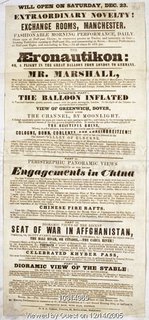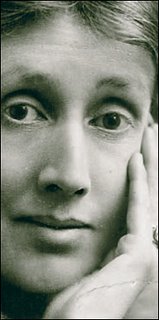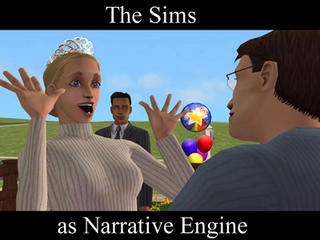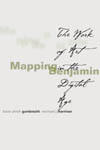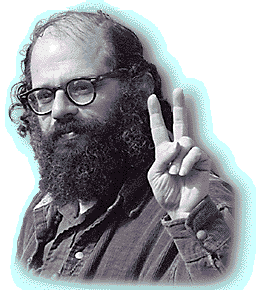Institutionen för Moderna språk Engelska/HUMlab
Seminar Paper
Introduction of Thesis Research
11th October 2005
B207b 15:00-17:00Corpus:Ftrain by Paul Ford (1997-2005)
http://www.ftrain.com/
Ftrain is described as a blog fiction, a database and as a website. A work in progress since 1997, on the site itself it is described as: “a collection of interlinked pages, with text, graphics, and links to other digitally encoded media objects.” As a text Ftrain is held together by the subject/author as he (“Paul Ford and his pseudonyms”) constructs a rhizomic verbal and visual topography of large proportions. The reader is reassured that what they are navigating through is a unified work:
Ftrain is this complicated because it has over 1000 separate nodes, all of them connected to one another in some way, with something like 700,000 words between them, and all extensible. It was designed to make it possible to tell stories over time, so that a piece begun in one year could be resolved in the next, just like it happens in life, but with the added satisfaction of narrative completion.
http://www.ftrain.com/ftrain_faq.html
Physically Ftrain is a hierarchal HTML document containing hundreds of layers. The complete taxonomy for Ftrain can be found at
http://www.ftrain.com/TOCHierarchy.html. According to the Table of Contents there are three suggested ways of reading Ftrain; along the hierarchal or in chronological or reverse chronological order. There are of course other methods for engaging with the text. The content of Ftrain is the journalism, opinions, poetry, prose and creative narratives constructed by Paul Ford. He also publishes the writings of others which can be email sent to him or material appropriated from other published sources. Within the linking system there is included in/attached to the text of Ftrain web pages and other digital texts which exist outside the hierarchy as represented in the Table of Contents.
Façade by Michael Mateas and Andrew Stern (2005)
http://www.interactivestory.net/
Façade is an interactive depiction of 3 dimensional space in which the user is a dinner guest in the Manhattan apartment of a young couple, Grace and Trip. Following a message left on your answering machine inviting you to dinner you choose a name. Using elements from digital games you interact verbally, physically and spatially with the two characters as they unburden their martial troubles to you. The entire story takes place in the visual field of the lounge room of their apartment. You are drawn into their arguing and anger as they ask you to take sides and make responses to their statements and questions. There are multiple endings depending on choices and statements made by you in the course of the story. The work is very narrative based and structurally does not resemble the normative concept of a computer game:
Façade doesn't give you a goal, which is why it's not a game. You can try to save their marriage, or you can try to split them up, or anything else you feel like. There's no way to win or lose, no value judgments about the quality of your play. By avoiding the “game” paradigm Façade also avoids a lot of baggage that games bring with them: connotations of strategy and competition, and the sense that it doesn't really matter.
http://www.gamasutra.com/features/20050728/adams_01.shtmlFollowing the conclusion of a Façade session you can view and print out a transcript of the dialogue, actions and movements undertaken by all three characters. Façade was constructed using ABLE, a computer programming language written by the Mateas and Stern.
Last Meal Requested by Sachiko Hayashi (2004)
http://www.e-garde.com/lmr/
Last Meal Requested is a multimedia work which incorporates audio, visual, textual and kinetic animation around the theme of violence committed by the State and the place of ethnicity in that violence. It was created using Macromedia Flash a multimedia authoring program that can work with video, graphic, animation text and sound. Within Last Meal Requested referents include the Halabja massacre of 1988, the beating-up of Rodney King in 1992, and the public execution of a woman in Taliban-Afghanistan in 2001. Coordinated with these images are sound clips of various voices that include a female voice repeating “Last meal requested, justice equality and world peace". This is in reference to the traditional last meal given to those facing state execution in the prison system of the United States of America. Selected links open recordings of voices speaking on hate, the state, power, acts of organised mass violence and racial segregation and objectification, and the terror inspired by such violence. An eerie sound track loops constantly comprised of slow drawn out electronic frequencies which may be running backwards. Images include mass graves, emaciated and child corpses, mob violence against women, Afro-American lynchings, Flash video of the LAPD beating of Rodney King, and the beating of a burka clad figure by a male. Situated on the boarder between narrative and art Last Meal Requested establishes a complex progression of meanings concerning the individual, society and history in relation to ‘the other’ and violence.
Twelve Blue: Story in Eight Bars by Michael Joyce (1996)
She looked out on the creek and measured out the threads like the fates, silk thread in twelve shades of blue. (Is pink blue? Is yellow or purple? She supposed so, she believed in her stories.) The trimmings she saved and cast out on the water like pollen, all the pretty colors.
Twelve Bar Blue, Fateshttp://www.eastgate.com/TwelveBlue/sl4.html
The only first generation hypertext included in this corpus and the only full hypertext by early pioneer and theorist of the form Michael Joyce to be found online. Twelve Blue is very much a networked text of a complex physical form expressed largely in prose narrative. It was produced using the Storyspace hypertext authoring software from Eastgate Systems Inc. Twelve Blue contains “ninety-six segments of text bound by 269 links, contains multiple sequences that feed into other strands, crisscross them, loop endlessly, or arrive at points of closure, with no single reading exhausting the branching and combinatory possibilities of the text.” (Douglas 1999: 42). Visual imagery is minimal with a central graphic of twelve pastel coloured lines the navigational indexes for the twelve parts and below this are the links for the eight bars. There is as well the colour blue which is the background to every one of the ninety seven lexia (after Barthes’ "units of reading"). The remainder of the text is lyrical prose passages with strong imagery which includes the themes of colours, seasons, water, love, and betrayal. The abstract given by Joyce when it was first published in 1997 stated that it concerned
A drowning, a murder, a friendship, three or four love affairs, a boy and a girl, two girls and their mothers, two mothers and their lovers, a daughter and her father, a father and his lover, seven women, three men, twelve months, twelve threads, eight hours, eight waves, one river, a quilt, a song, twelve interwoven stories, a thousand memories, Twelve Blue explores the way our lives--like the web itself or a year, a day, a memory, or a river--form patterns of interlocking, multiple, and recurrent surfaces.--mj
Post Modern Culture Volume 7, Number 3 (May, 1997)Clicking on the index links contained with the 12 strands in the graphic or the 8 bars or clicking on linked words in the various lexia opens further pages of fragmented prose or complete segments.
The Book of Going Forth by Day by M.D. Coverley (2005)
http://califia.hispeed.com/Egypt/ (CD-ROM)
I am yet to receive the complete text of The Book of Going Forth by Day but I have negotiated the extract that is found on the internet. The work was produced using Macromedia Director and contains audio, written text, images, animation and calligraphic content. The text draws upon elements from the Egyptian Book of the Dead concerning the migration of the soul after death, diary and letter forms and a quest or mystery narrative. The story concerns the Californian narrator’s search for her brother Ross, who has been living in Egypt for some time, and in a letter he proposes a boat cruise down the Nile and she accepts. From her arrival in Egypt strange things begin to happen as she is surprised by the nervous manner and strange appearance of her brother, “He had gone native or something. He looked awful. Dirty smock, wild hair, eyes like the inside of a tomb.” Music accompanies each of the lexia in the text and with visual content both draw on often nostalgic constructions around things “Egyptian”. The Book of Going Forth by Day is the only text in this corpus which is not entirely online but is rather presented as a limited edition CD-ROM.
Alleph by Sakab Bashir (2004) http://www.alleph.net/ALLEPH_HOME.html
The whole is contained in all and many of the parts and all the parts are contained in the whole. No one part is better that the other part and there is not right order in which to read. The themes of the text are not so much illuminated and articulated by the images as they are planted but them and each is a seed of the other. A seeming Democracy of Choice is actually the invisible hand ~ guiding shaping and helping.
Taken from the splash page to Alleph.net
Alleph is a complex labyrinth based upon seven depicted visual spaces; an overgrown garden, an abandoned school classroom, a brick wall, an abandoned workshop, empty prison cells, a landscape of menhirs and an abandoned medical theatre. From these dynamic, navigable spaces eleven texts of spoken and written prose, poetic and dramatic narratives and eight puzzles (game or toy like) may be negotiated by the reader. As well as the spoken audio texts; in Rasta Creole English, Persian, Urdu and Standard English, there are also several sound and music audio texts. Spoken and written works included within Alleph are by Maqapi Selassie, Farid al Din Attar, Amjad Hussain Shah and Irvine Saunders. Alleph was produced using Macromedia Flash by a production team from Emote Media Production Company in Birmingham England, led by digital artist Sakab Bashir. The work is described by Bashir as “A true interactive story” and “a self portrait” in “a patient labyrinth of lines tracing the face”.
Dreamphage by Jason Nelson (2003)
http://www.secrettechnology.com/dreamaphage/opening.html“Perhaps the cure is hidden in the dreams themselves"
Medical Report: Dreamphage 7Dreamphage is again a Macromedia Flash work but in contrast to Alleph.net it is constructed in formats visually closer to a traditional webpage or even a book. The text is concerned with the spread of an incurable and terminal virus, Dreamphage, which manifests as a series of repetitive dreams in a growing number of patients in “Bailee Henderson Lunatic Asylum”. This is initially presented to us, the readers, in the opening screen of Dreamphage as a virtual book, the eight page “Medical Report: Dreamphage”, which has ‘pages’ that can be turned by using the computer mouse. Turing each page is accompanies by clouds of virtual dust and an eerie synthesizer soundtrack. Beyond the introductory medical report there are individual patient reports accessible under the link “[distance viraltheory]”, and report style writings on viruses, which are opened by the links “[withindrom]”, [angry bovinedisease], [coupophage] and [chairaphage]. These virtual books contain, along with prose narratives, pixilated Flash animated illustrations, diagrams, maps, quotes, hand drawn pictures, and sounds. The link [introduce the virus] produces a countdown of 30 seconds and then the window “Dreamphage will be downloaded into the machine”. At 00.00 a binary code in red appears on the screen.
Foundational Theory:“The conceptual changes that ushered in modernity, that is those changes that occurred between the Middle Ages and the Renaissance, may be seen as a matter of learning to read in a new way. It was a matter of moving away from reading between the lines to reading what was on the lines – giving increased importance to the information explicitly represented in the text. New ways of reading gave rise to new ways of writing texts and both gave rise to new ways of thinking about the world and about the mind.”
(Olsen 1994:143)
“A close genetic relation holds between the book and the computer. For textual and digital forms alike, however, this historical continuity has brought questions and problems that have not been studied at all well precisely because the genetic relation between the two media has been too much taken for granted, as if it were simple to see and understand. The situation is emblemized in the dichotomy of enthusiasm and skepticism that marks so much of the current discussion – indeed that organizes the discussion along two sides.”
(McGann 2001:xii)
“My claim is that with significant exceptions, print has become transparent for us because it is ubiquitous, the sea in which we swim. Your own work on inscription technologies is one of those exceptions, of course, along with the criticism of theorists such as Johanna Drucker, Jerome McGann, and Matthew Kirschenbaum. The connecting point with [Becoming] Posthuman is an emphasis on embodiment, now understood as the interplay of a work’s physicality with its signifying practices. Now that electronic textuality is bursting on the scene, it seems we have a magnificent opportunity to think again about the specificities of both print and electronic media, which can illuminate one another by contrast. I hope to electrify the neocortex of literary studies into recognizing that the print book is after all an interface with its own presuppositions, assumptions, and configurations of the reader.” (Gitelman 2002:2)
“The theory holds two positions: first, that the apparitions of text – its paratexts, bibliographical codes, and all the visual features – are as important in the text’s signifying programs as the linguistic elements; second that the social intercourse of texts – the contexts of their relations – must be conceived as essential part of the “text itself” if one means to gain an adequate critical grasp of the textual situation.”
(McGann 2001:12)
“Computers are much more than hardware and software. In their general form, computers are simulation machines producing environments from objects that sit on desktops to networks spanning the globe. To construct an environment is, of course, to anticipate and structure the user’s interaction with it and in this sense to construct the user as well as the interface”
(Hayles 2002:48)
“…we may conclude that the literary work has two poles, which we might call the artistic and the aesthetic: the artistic is the author’s text and the aesthetic is the realization accomplished by the reader. In view of this polarity, it is clear that the work itself cannot be identical with the text or with the concretization, but must be situated somewhere between the two. It must inevitably be virtual in character, as it cannot be reduced to the reality of the text or to the subjectivity of the reader, and it is from this virtuality that it derives its dynamism. As the reader passes through the various perspectives to one another he sets the work in motion, and so sets himself in motion too.”
(Iser 1978:21)
“We know now that a text is not a line of words releasing a single ‘theological’ meaning (the message of the Author-God) but a multi-dimensional space in which a variety of writings, none of them original, blend and clash. A text is a tissue of quotations drawn from the innumerable centres of culture.”
(Barthes 1977:146)
“…all images are polysemous; they imply, underlying their signifiers, a ‘floating chain’ of signifieds, the reader able to choose some and ignore others.”
(Barthes 1977:38-39)
“With digital texts the dimensionality of the material realization of the text is a more complex issue, since the text exists both as data and code permanently stored in memory as a one-dimensional sequence of binary digits and as a temporary two-dimensional visual display on the screen when the code is executed. But the image screen may mimic spaces with different numbers of dimensions, just as a flat two dimensional painting may mimic three-dimensional space through the use of perspective. In addition to the material space actually taken by the text, there is consequently the virtual space that the text seems to occupy, the pseudo-materiality of it appearance.”
(Ryan 1999:13)
“Space is not a neutral and passive geometry but rather is continuously produced through socio-spatial relations; the relationship between space, spatial forms and spatial behaviour is not contingent on ‘natural’ spatial laws, but is the spatial product of cultural, social, political and economic relations; space is not essential but is constructed and produced. As such, space is constituted through social relations and material social practices (Massey 1994:254). Soja (1985) defines socially-produced space as ‘spatiality’, suggesting that not all space is socially produced but all spatiality is. Spatiality, then, I distinguished from space-time physics as it divides space as used and constructed from space as mathematically formulated. The process of (re)producing space, of its spatiality changing through time as a consequence of shifting socio-spatial relations and contestation, Shields (1997) refers to as ‘social spatalisation’.”
(Dodge and Kitchin 2001:29)
“Chronotope: Literally, ‘time-space’. A unit of analysis for studying texts according to the ratio and nature of the temporal and spatial categories represented. The distinctiveness of this concept as opposed to most other uses of time and space in literary analysis lies in the fact that neither category is privileged; they are utterly interdependent. The chronotope is an optic for reading texts as x-rays of the forces at work in the culture system from which they sprang.”
(Bakhtin 2002:425-426)
“First, the discussion operates with too narrow a model of narrative, one preoccupied with the rules and conventions of classical linear storytelling at the expense of consideration of other kinds of narratives, not only the modernist and postmodernist experimentation that inspired the hypertext theorists, but also popular traditions which emphasize spatial exploration over causal event chains or which seek to balance between the competing demands of narrative and spectacle. Second, the discussion operates with too limited an understanding of narration, focusing more on the activities and aspirations of the storyteller and too little on the process of narrative comprehension. Third, the discussion deals only with the question of whether whole games tell stories and not whether narrative elements might enter games at a more localized level. Finally, the discussion assumes that narratives must be self-contained rather than understanding games as serving some specific functions within a new transmedia storytelling environment.”
(Jenkins 2004).
“Thus visual culture opens up an entire world of intertextuality in which images, sounds and spatial delineations are read on to and through one another, lending ever accruing layers of meaning and of subjective responses to each encounter we might have with film, TV, advertising, art works, buildings or urban environments.”
(Mirzoeff 1998:24)
“The withering away of the state of being under the analysis of the political economy of the signifier finds its historical conditions of possibility for its deconstructive neurosis in the delimitation of the province of language by the image. Language just can’t process all that visuality – it is like trying to eat your way out of a whale, which, of course, is somewhere you don’t belong in the first place. That’s why ‘you’ is such a hard thing to be.”
(Beller 2004:68)
“For us art is born between individuals and communities and cultures in the process of dialogic interaction. Creation takes place not within the suffocating confines of Cartesian egos or even between discrete bounded cultures but rather between permeable changing communities. Nor is it a question of a mindless ‘anthropological’ levelling which denies all criteria of aesthetic evaluation but rather of historically grounded analyses of multicultural relationality, where one history is read contrapuntally across another in a gesture of mutual ‘haunting’ and reciprocal relativization.”
(Ella Shohat and Robert Stam 2004:56)
“New Critical close readings and conventional thematic analyses alike tend to position earnestness and stability at the heart of ‘serious’ literature. To constitute a literary text as static, truth telling object, abstruse, hieratic, and linear, however, not only mutes the roar Joyce called “soundsense” but also strands the text in a private, timeless, hermetic isolation, a seclusion that is not out of earshot of but antithetical to the acoustic technologies…[that] ground inquiry.”
(Morris 1997:5)
“Moreover, this mix is the very process through which some idea of a unity is brought to bear on the actual profusion and disparity of phenomena. In other words, it is through interruption that the semblance if a continuous integrity is established, it is only through noise that the framed ephemerality of music is secured as ephemeral.”
(Kahn 1999:43)
“Thus, the grinding sound of power relations is heard here in the way noises ‘contain’ the other, in both senses of the word. Noises are informed by the sounds, languages and social position of others. It is only because certain types of people are outside any representation of social harmony that their speech and other sounds associated with them are considered to be noise. In the process of appropriation these others are subjected to forms of containment they have already known in other less semiotic exercises.”
(Kahn 1999:47)
Framing Questions (In no particular order):How does one undertake close readings of multimedial heterogeneous digital texts?
As emerging from close readings, explain and analyze the relationships between form and content within the texts?
How are they to be read critically as cohesive yet “fractal” or “tissued” networks of meaning?
Can a critical analysis of these texts address broader issues in regards to technology and culture?
How is an “ideal reader” produced by each of the texts and who is that subject?
Do these examples of “new media” embody radical or innovative narrative structures and what are the natures of these structures?
Does close reading reveal common narrative structures in the texts and are these dimensions of a generic ‘digital textuality’?
What are their features as networked texts?
How would one deconstruct, analyse and compare the spatial configurations found in each text?
How do the various orders of spatial configurations (visual, architectural, textual, diegetic) provoke the reader towards narrative coalescence?
Can we today look to historical and cross-cultural examples of spatial narrative forms in order to better understand the contexts and to analyse new media narrative forms?
Can one position the texts in relation to broader discourse analyses, considering such points as bias in materiality, bias in content, identity and power?
In each of these texts is the interplay between verbal text and image combined, parallel, complimentary or redundant and how is this configured in relation to narrative structures?
In what ways does audio contribute towards contiguity and immersion with the textual worlds for the reader?
Can these texts be seen as examples of a new digital literacy, which challenges such traditional conceptions as the connection in Western culture between writing and memory or permanence?
Construct critical analyses of the second-order means of expression, such as the computer language codes and the software tools that go towards creating the visual, audible and textual fields?
In regards to narrative and space is emotional significance as much a product of design as of narrative in the texts?
What is the function of design in the performance of digital texts such as these, especially in reference to Jenkins (2002) concept of narrative architecture?
Are established modes of text production, consumption and subsequently consciousness, disrupted or challenged by these examples of complex digital textuality?
In terms of visual theory what does critical reading of the visual sign as a ‘floating chain of signifiers’ reveal of their digital interactive contexts?
How are the material conditions of the primary texts to be represented in a paper based critical text?
Bibliography:Bakhtin M.M. The Dialogic Imagination. Ed. Michael Holquist. 1982. Austin. Texas UP. 2002.
Roland Barthes. Image Music Text. Trans. Stephen Heath. New York Hill and Wang. 1977.
Jonathan L. Beller Kino-I, Kino-World The Visual Culture Reader. Ed. Nicolas Mirzoeff 1998 London. Routledge. 2004.
Martin Dodge and Rob Kitchin. Mapping Cyberspace. London. Routledge. 2001.
J. Yellowlees Douglas. The End of Books--or Books without End? Reading Interactive Narratives. Ann Arbor. Michigan UP. 1999.
Jim McClellan. How to write a blog-buster. Sept. 2005 The Guardian Unlimited April 8, 2004
http://technology.guardian.co.uk/online/story/0,3605,1187545,00.htmlJerome McGann Radiant Textuality: Literature after the World Wide Web. New York: Palgrave, 2001
Lisa Gitelman Materiality Has Always Been in Play: An Interview with N. Katherine Hayles Oct. 2005 The Iowa Review issue 2 - mediation - fall 2002
http://www.uiowa.edu/~iareview/tirweb/feature/hayles/NKHinterview.pdfN. Katherine Hayles. Writing Machines. Cambridge. MIT. 2002.
Henry Jenkins. Game Design as Narrative Architecture. First Person: New Media as Story, Performance, Game. Eds. Noah Wardrip-Fruin and Pat Harrigan. Cambridge: MIT Press, 2004.
Michael Joyce. Abstract to Twelve Blue. Oct. 2005 Post Modern Culture: An Electronic Journal of Interdisciplinary Criticism. Volume 7, Number 3. May, 1997.
http://www3.iath.virginia.edu/pmc/text-only/issue.597/contents.597.htmlWolfgang Iser The Act of Reading: A Theory of Aesthetic Response. Baltimore. John Hopkins UP. 1978.
Nicolas Mirzoeff (Ed.) The Visual Culture Reader. 1998 London. Routledge. 2004
Adelaide Morris. Sound States: Innovative Poetics and Acoustical Technologies. Chapel Hill. North Carolina UP. 1997.
David R. Olsen The World on Paper: The Conceptual and Cognitive Implications of Writing and Reading. Cambridge. Cambridge UP. 1994.
Marie-Laure Ryan Introduction Cyberspace, Cybertexts, Cybermaps. Ed. Marie-Laure Ryan Bloomington. Indiana UP. 1999.
Ella Shohat and Robert Stam. Narrativizing Visual Culture. The Visual Culture Reader. Ed. Nicolas Mirzoeff 1998. London. Routledge. 2004.




